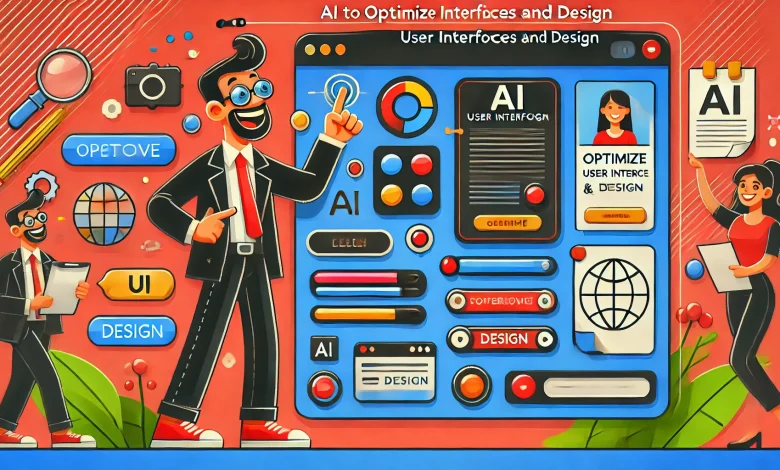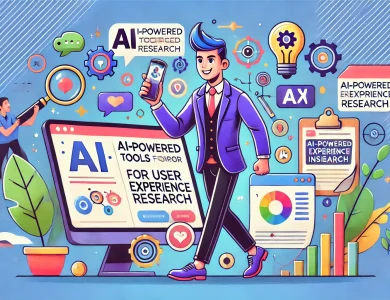Using AI to Optimize User Interfaces and Design: A Strategic Guide for Product Managers

As artificial intelligence (AI) continues to evolve, its role in user interface (UI) and user experience (UX) design is becoming increasingly important.
AI not only accelerates the design process but also enhances personalization, optimizes interactions, and significantly improves user satisfaction. For product managers and UI/UX designers, understanding how to leverage AI for UI optimization is key to driving both business outcomes and user engagement.
This article offers a comprehensive guide on how AI is transforming UI/UX design, from foundational concepts to advanced strategies. We’ll explore how AI-driven tools improve efficiency, create tailored user experiences, and align with overarching business objectives.
What is AI-Driven UI/UX Optimization?
AI-driven UI/UX optimization refers to using artificial intelligence technologies—such as machine learning, natural language processing (NLP), and computer vision—to improve digital interfaces by making them more responsive, personalized, and intuitive. Unlike traditional design processes, AI allows designers and product managers to:
- Analyze user behavior in real-time to make instant improvements.
- Automate iterative tasks, enabling faster design cycles.
- Personalize user experiences, making interfaces more engaging and relevant to individual users.
By leveraging AI, teams can optimize designs based on data, creating a more user-centric approach that leads to measurable business results such as increased engagement and reduced churn.
The Role of AI in Modern Design Systems
In modern design systems, AI automates repetitive tasks, generates data-driven design suggestions, and offers real-time feedback to streamline decision-making. This allows designers to focus on strategic design choices while AI handles the data-heavy aspects:
- Automation of basic design tasks, such as formatting and resizing elements across various screens.
- AI-generated design recommendations based on user interaction patterns.
- Real-time performance feedback, allowing product managers to test and iterate on design concepts faster.
Business Impact: AI enables faster iterations, reducing design cycles and time-to-market, ultimately improving product agility and increasing ROI.
Understanding the Basics of AI in UI Design
To apply AI in UI/UX optimization effectively, it’s crucial to understand the core technologies:
- Machine learning (ML): Learns from user behavior to provide tailored design recommendations and predict user actions.
- Computer vision: Analyzes the visual components of interfaces (e.g., image placement, contrast) to optimize aesthetics and functionality.
- Natural language processing (NLP): Powers conversational interfaces and voice-activated systems, making them more intuitive and accessible.
These technologies empower product managers and designers to optimize their products not only based on aesthetic choices but also on data-driven insights about user interactions.
AI vs. Traditional UI Design Methods
Traditional UI design relies heavily on manual iteration, user testing, and qualitative feedback. In contrast, AI enables:
- Faster iterations through automated A/B testing and real-time data collection.
- Greater accuracy by using predictive analytics to forecast user behavior.
- Personalization at scale, enabling UIs to adapt to individual user preferences, which is far more difficult in traditional methods.
Strategic Insight: AI-driven design ensures that user interfaces are continuously optimized, improving the user experience while aligning with key business objectives such as increased conversions and lower customer acquisition costs.
Why Product Managers Should Care About AI-Driven UI Design
Product managers play a critical role in guiding product strategy, and AI-driven design has significant implications for:
- Shortening development timelines: AI automates testing and iteration, allowing for faster design cycles and quicker feature releases.
- Improving user retention: AI enables personalized user experiences that increase engagement and satisfaction.
- Driving business growth: AI-driven interfaces not only improve UX but also contribute to KPIs such as conversion rates and customer lifetime value (CLTV).
Key Business Outcome: AI integration into UI/UX can improve product-market fit by optimizing the user experience in real-time, leading to increased engagement and higher retention rates.
AI for Personalized UI Design
AI enables hyper-personalization in UI design by analyzing user behavior and preferences to adjust the interface dynamically. Key applications include:
- Personalized layouts that adapt based on individual navigation patterns.
- Dynamic content presentation: AI-driven systems can prioritize content based on user behavior, showing the most relevant information in real-time.
Business Impact: Personalization leads to improved user retention and higher engagement rates, directly impacting customer satisfaction and CLTV.
Using AI for User Behavior Analysis
AI tools can track and analyze how users interact with your product, offering deep insights into user behavior:
- Real-time heatmaps showing high-engagement areas.
- Pattern detection that identifies common friction points where users struggle.
These insights allow product managers to make informed decisions about which aspects of the UI need improvement, enhancing the user experience and boosting key metrics like time spent on site or app.
AI-Powered A/B Testing for UI Optimization
AI automates the A/B testing process, allowing for:
- Multivariate testing across multiple UI elements simultaneously.
- Real-time performance tracking, which speeds up decision-making on which design variations work best.
Strategic Advantage: AI-powered A/B testing reduces the iteration cycle, allowing for faster go-to-market strategies and continuous optimization of the user interface.
AI for Responsive and Adaptive Design
AI can automatically optimize UIs for different screen sizes, devices, and user preferences:
- Device-specific design adjustments ensure a seamless experience across mobile, desktop, and tablet.
- Personalized adaptations based on user behavior ensure that content is displayed optimally for each individual.
Business Impact: Consistent, optimized UI across all devices improves user experience, leading to higher user retention and lower bounce rates.
AI-Driven UX Personalization at Scale
AI enables large-scale personalization without compromising efficiency. By analyzing large datasets, AI systems can:
- Segment users into micro-segments based on behavior, preferences, and demographics.
- Deliver tailored experiences that resonate with individual users, fostering loyalty and increasing engagement.
Key Outcome: Personalization at scale can significantly boost customer engagement and loyalty, driving up retention rates and reducing customer acquisition costs.
AI-Powered Heatmaps for Analyzing User Interaction
AI-driven heatmaps visualize user interactions with your UI, identifying high-traffic areas and highlighting elements that need improvement:
- Data-driven insights into user behavior allow for quick adjustments to optimize the flow of the interface.
- Real-time monitoring ensures continuous improvement as user behavior evolves.
Business Impact: Better understanding of user interactions leads to improved UX, higher engagement, and a more intuitive product.
Enhancing Accessibility with AI-Optimized UI Design
AI also plays a critical role in making interfaces more accessible:
- Generating alt text automatically for users with visual impairments.
- Adapting font sizes and contrast to meet the needs of users with disabilities.
Strategic Insight: Accessibility improvements not only expand your user base but also help ensure compliance with legal regulations, protecting your business from potential liabilities.
Conclusion
AI-driven UI/UX optimization is reshaping the way product managers and designers approach user interface design. By harnessing the power of AI, companies can streamline design processes, create hyper-personalized experiences, and ultimately drive business growth through improved engagement and user satisfaction. As AI continues to evolve, its role in optimizing interfaces will become even more integral to delivering exceptional digital experiences that align with strategic business goals.


